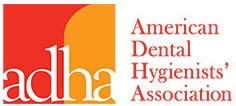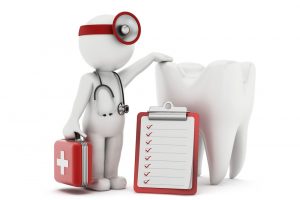Helping Thousands of People Each Year Find Dental Services
- Emergency dental surgery, cavities, general dental care.
- Find immediate help, no insurance required.
- Get relief from chipped, cracked or lost teeth, abscesses or toothaches.
Orthodontist near Me
 Experiencing a dental emergency for orthodontic treatment is never fun—it affects your beautiful smile and can ruin your confidence. Like visiting the emergency room, it’s not something people really plan for and expect to happen. Dental emergencies such as damaged metal braces, broken dental implants or need cutting-edge technology to ensure a healthy smile, usually occur outside of normal business hours or while away from home so it can be difficult to find a dentist who can see you right away. And unlike a regular medical emergency, there’s no centralized 911 dispatch to offer assistance.
Experiencing a dental emergency for orthodontic treatment is never fun—it affects your beautiful smile and can ruin your confidence. Like visiting the emergency room, it’s not something people really plan for and expect to happen. Dental emergencies such as damaged metal braces, broken dental implants or need cutting-edge technology to ensure a healthy smile, usually occur outside of normal business hours or while away from home so it can be difficult to find a dentist who can see you right away. And unlike a regular medical emergency, there’s no centralized 911 dispatch to offer assistance.
So, what can you do?
First and foremost, remain calm. It’s easy to feel panicked because there’s so much going on—likely, the emergency is getting in the way of your plans, you’re in pain, and you’re concerned about the expense. But it’s important to remain calm and focused so that you can clearly relay information to those around you, and render proper first-aid to the site.
If you’re unsure whether you’re experiencing a true dental emergency you can use the following guidelines as reference:
1. A broken or chipped tooth should be looked as soon as possible, regardless whether it feels painful, because it can easily become infected, break further, and/or cause damage to other areas of your mouth.
2. Teeth that have been knocked out can often be re-implanted if you get to the dentist quick enough after injury.
3. Severe toothaches can be a symptom of several different things: infection, cavities, cracks, cancer or even a broken jaw. An emergency dentist will relieve your pain then find and treat the underlying cause or refer you to a specialist.
4. Abscesses are pockets of infection that usually present as a small pimple-like bump along the gums. These infections affect the root of your tooth and are often very painful.
5. An adult tooth that suddenly falls out is usually a sign of an underlying problem with the bones, gums, and other structures that stabilize the tooth. It needs to be immediately evaluated so that the tooth has the best chance of being saved.
6. Discharge of any kind should be looked at as soon as possible because teeth and gums are supposed to be a closed system; there shouldn’t be anything leaking from them. Discharge can be a sign of infection, ulcers or tooth decay.
Once you’ve determined that you need a dentist right away, you can perform first-aid on the area and contact an emergency dentist. Both steps are vital to saving your teeth and minimizing further damage. Often, it’s helpful to have a friend or family member contact dentists while the injured party treats the tooth.
First-aid can be rendered by a layperson without special training or supplies. In general, first-aid for a dental emergency isn’t much different than it is for a regular medical emergency. The goal is to preserve life, prevent further injury, and promote recovery.
The first-aid for dental emergencies is below.
1. Wash your hands using warm water and soap before examining your mouth or touching any fragments of broken teeth. Doing so helps prevent infection and keeps the area clean.
2. Rinse your mouth using warm water to remove superficial debris and blood from the area. It’ll give you a good opportunity to see what damage has occurred. Don’t swish too vigorously though or else it could interfere with clotting that has already started.
3. Handle teeth and their fragments very gently. Broken teeth can easily Only pick them up by the crown, not by the root. The root is sensitive and may be damaged by touching it. It’s safe to quickly rinse these pieces using lukewarm water, but definitely, don’t scrub or rub them.
4. Save any teeth or fragments of all teeth. They need to stay moist in order to be saved. It’s not a good idea to wrap the pieces in dry gauze or place them in a cup of tap water. Tap water contains chemicals and minerals that can damage these pieces. Instead, tuck the fragments in the pocket between your gums and cheek. If that’s not possible you can place them in a shallow cup of milk; you just need enough to completely cover the pieces.
Whole teeth can be reinserted into the socket they came from. This is only a temporary holding place until you visit the dentist. Luckily, though, it’s often possible to re-implant whole permanent teeth back in place. Bite down on a piece of gauze or paper towel to keep it in place.
5. Use an ice pack to reduce swelling. Apply the ice to the outside of the cheek where the tooth is injured. There’s no need to put the ice in direct contact with the broken or missing tooth because that area will be very sensitive and extreme temperatures can cause further damage. Holding the ice outside of the cheek maximizes coverage and minimizes extra damage.
Once the injury is stabilized you can start searching for an emergency dentist near you.
In the past, this would be an arduous task of calling a bunch of offices and hospitals until you finally found that could see you. Thankfully, technology and communication have advanced so that the process is much easier and faster.
The easiest way to find an emergency dentist is to call a referral service. Referral services act as intermediaries that work to connect consumers to businesses that offer the specific service they need. All you have to do is contact their main line to speak with an associate who has access to a large database of providers that can be reached immediately. Usually, they’ll transfer your call directly to the proper office instead of having you hang up and dial another number. Most referral companies are open 24/7 so they can be reached anytime, making them extremely convenient.
Relate Posts to Read:
Finding A Spanish Speaking Dentists Near Me- Hablamos Espanol!





